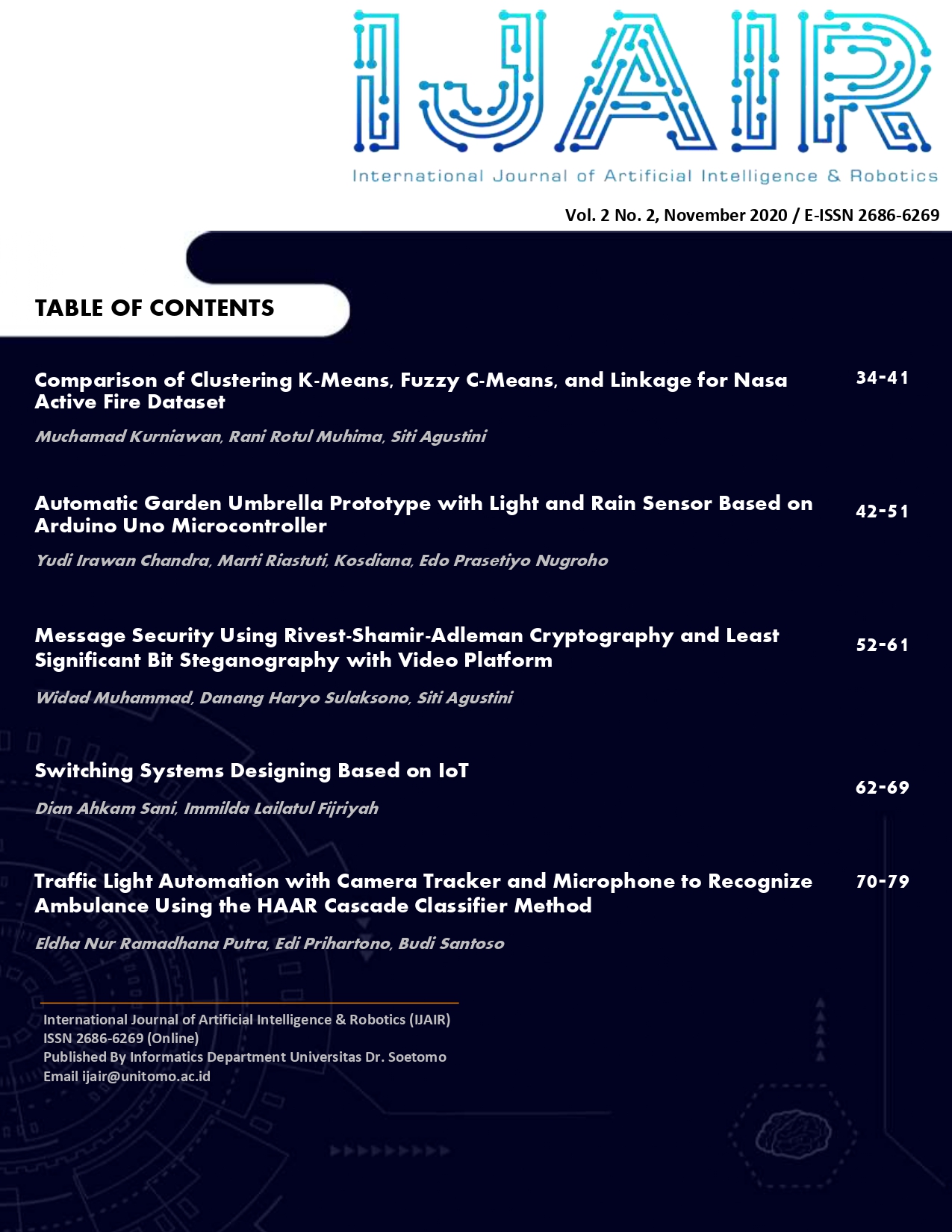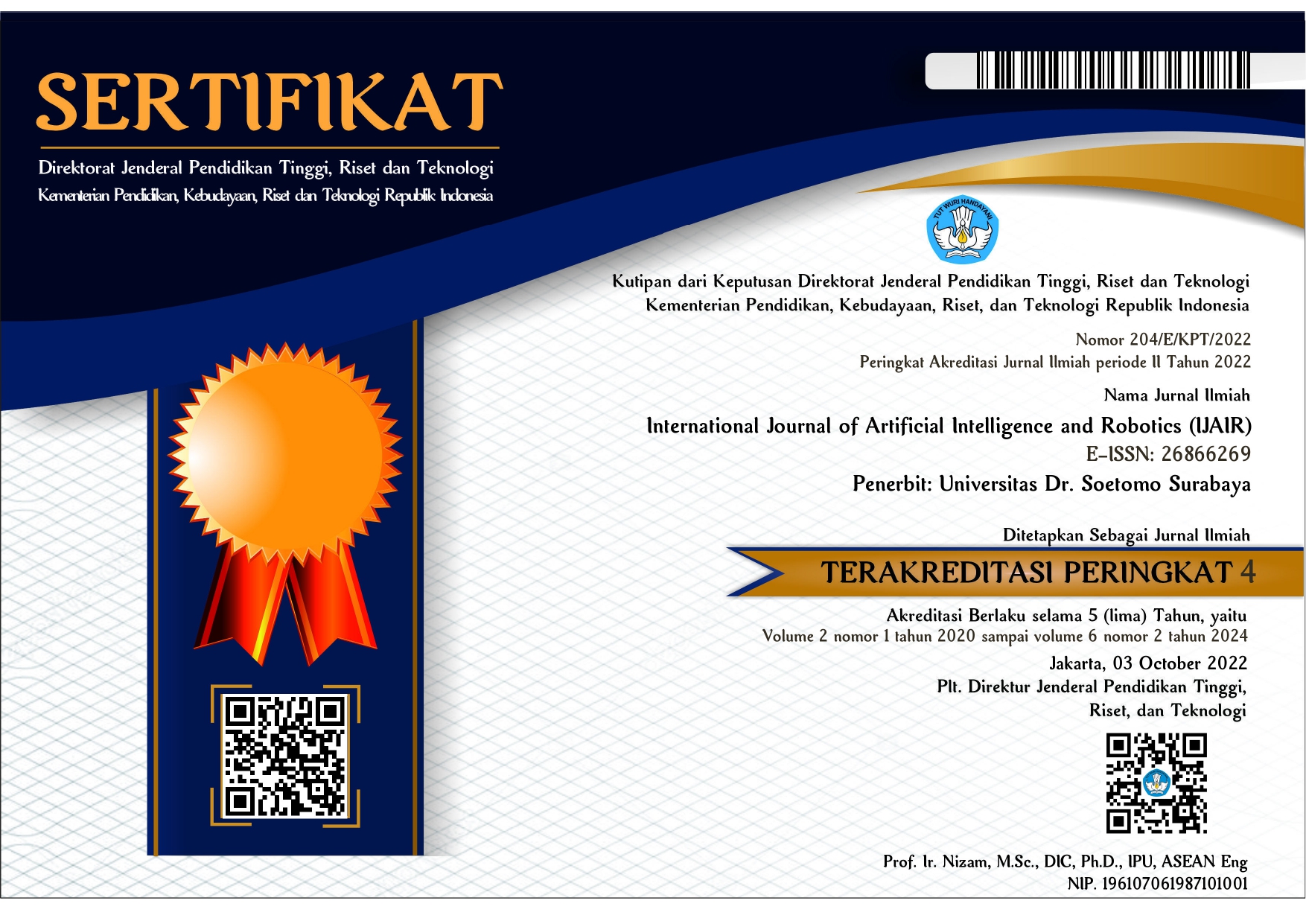[1] R. R. Muhima, M. Kurniawan, and O. T. Pambudi, “A LOF K - Means Clustering on Hotspot Data,” Int. J. Artif. Intell. Robot., vol. 2, no. 1, pp. 29–33, 2020, doi: 10.25139/ijair.v2i1.2634.
[2] E. Çolak and F. Sunar, “The importance of ground-truth and crowdsourcing data for the statistical and spatial analyses of the NASA FIRMS active fires in the Mediterranean Turkish forests,” Remote Sens. Appl. Soc. Environ., vol. 19, no. April, p. 100327, 2020, doi: 10.1016/j.rsase.2020.100327.
[3] T. V Loboda, L. Giglio, L. Boschetti, and C. O. Justice, “Regional fire monitoring and characterization using global NASA MODIS fire products in dry lands of Central Asia,” Front. Earth Sci., vol. 6, no. 2, pp. 196–205, 2012, doi: 10.1007/s11707-012-0313-3.
[4] R. V. Virgil Petrescu, R. Aversa, T. M. Abu-Lebdeh, A. Apicella, and F. I. T. Petrescu, “NASA Satellites Help us to Quickly Detect Forest Fires,” Am. J. Eng. Appl. Sci., vol. 11, no. 1, pp. 288–296, 2018, doi: 10.3844/ajeassp.2018.288.296.
[5] P. Li, C. Xiao, Z. Feng, W. Li, and X. Zhang, “Occurrence frequencies and regional variations in Visible Infrared Imaging Radiometer Suite (VIIRS) global active fires,” Glob. Chang. Biol., vol. 26, no. 5, pp. 2970–2987, 2020, doi: 10.1111/gcb.15034.
[6] X. Wei, G. Wang, T. Chen, D. F. T. Hagan, and W. Ullah, “A spatio-temporal analysis of active fires over China during 2003-2016,” Remote Sens., vol. 12, no. 11, 2020, doi: 10.3390/rs12111787.
[7] A. A. Pereira et al., “Burned area mapping in the Brazilian Savanna using a one-class support vector machine trained by active fires,” Remote Sens., vol. 9, no. 11, 2017, doi: 10.3390/rs9111161.
[8] O. C. D. Anejionu, G. A. Blackburn, and J. D. Whyatt, “Detecting gas flares and estimating flaring volumes at individual flow stations using MODIS data,” Remote Sens. Environ., vol. 158, pp. 81–94, 2015, doi: 10.1016/j.rse.2014.11.018.
[9] D. Hand, H. Mannila, and P. Smyth, Principles of Data Mining, vol. 2001. 2001.
[10] W. M. J. Mohammed J. Zaki, Data Mining and Analysis: Fundamental Concepts and Algorithms, vol. 27. Cambridge University, 2013.
[11] A. Martino, A. Rizzi, and F. M. F. Mascioli, “Distance Matrix Pre-Caching and Distributed Computation of Internal Validation Indices in k-medoids Clustering,” Proc. Int. Jt. Conf. Neural Networks, vol. 2018-July, pp. 1–8, 2018, doi: 10.1109/IJCNN.2018.8489101.
[12] P. A. Murena, J. Sublime, B. Matei, and A. Cornuéjols, “An information theory based approach to multisource clustering,” IJCAI Int. Jt. Conf. Artif. Intell., vol. 2018-July, no. July, pp. 2581–2587, 2018, doi: 10.24963/ijcai.2018/358.
[13] V. S. Akondi, V. Menon, J. Baudry, and J. Whittle, “Novel K-Means Clustering-based Undersampling and Feature Selection for Drug Discovery Applications,” in 2019 IEEE International Conference on Bioinformatics and Biomedicine (BIBM), 2019, pp. 2771–2778, doi: 10.1109/BIBM47256.2019.8983213.
[14] M. Misuraca, M. Spano, and S. Balbi, “BMS: An improved Dunn index for Document Clustering validation,” Commun. Stat. - Theory Methods, vol. 48, no. 20, pp. 5036–5049, 2019, doi: 10.1080/03610926.2018.1504968.
[15] J. Lipor and L. Balzano, “Clustering quality metrics for subspace clustering,” Pattern Recognit., vol. 104, p. 107328, 2020, doi: 10.1016/j.patcog.2020.107328.
 Abstract views: 788
,
Abstract views: 788
,
 PDF downloads: 300
PDF downloads: 300
 Ethical Statement downloads: 0
Ethical Statement downloads: 0
 Copyright Transfer Agreement downloads: 0
Copyright Transfer Agreement downloads: 0
 Hasil cek plagiasi downloads: 0
Hasil cek plagiasi downloads: 0
















